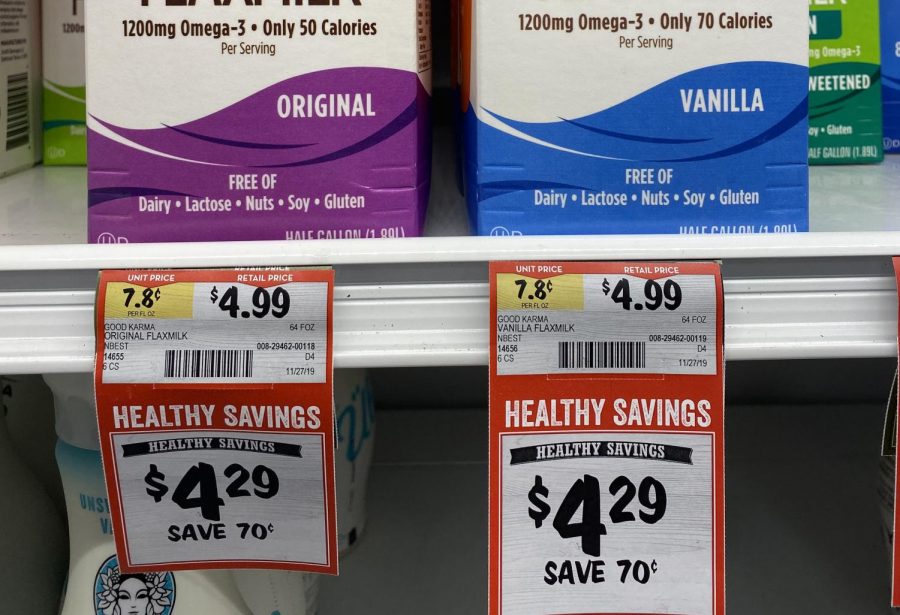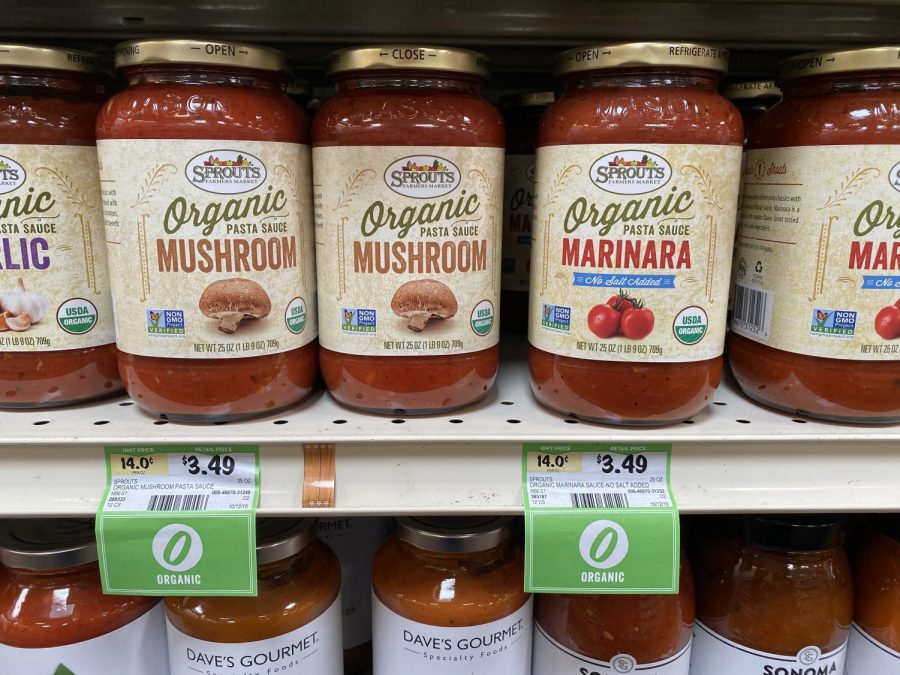Cost of Healthy Eating Unfair
December 3, 2019
In a nation plagued by a 39.8% obesity rate, according to the Centers for Disease Control and Prevention, 1 might hope that adequate measures are being implemented to make healthy eating more accessible. Unfortunately, this is not the case today.
Instead, unhealthy food continues to be the more financially-friendly option.
When people try to adjust their diets – whether this means buying more produce or eliminating meat products – they are greeted with discouragingly-high costs, which is extremely problematic.
The propensity for the 1 in 4 Americans to eat fast food every day, according to DoSomething.org, isn’t necessarily that healthy food is expensive, but rather, that greasy junk food is disproportionately cheap. Sure, we can buy a fresh apple for less than a dollar at most staple grocery stores. But still, a bag of hyper-processed, salty, addictive potato chips is both more enticing and cheaper.
How often do you see a TV commercial advertising Jack-in-the-Box’s BBQ Bacon Double Cheeseburger combo, which includes the burger, a soda, and an order of fries for $4.99? Why are the sugary, processed cereals always on sale at the grocery store, while those with whole grains and no refined sugars are not? Even healthier versions of pasta are substantially more expensive: at Target, a 16 oz box of normal, enriched-bleached-flour pasta costs $0.85, while an 8 oz box of chickpea pasta (which contains 23 grams of protein and 30% less net carbs than traditional pasta, according to the packaging) costs $2.99. That’s a 251% price increase.
According to a 2013 Harvard School of Public Health report, living with a healthy diet costs about $1.50 more per day than an unhealthy diet. While this cost may seem minimal, it adds up quickly – maintaining a healthier diet will cost a family of 4 an extra $2,190 per year.
39.7 million Americans lived in poverty in 2017, according to the Center for Poverty Research at the University of California, Davis. Presumably, these people would not be able to afford chickpea pasta or that bag of apples every day, showing that, like many things in our community, a healthy diet may be yet another indicator of privilege.
Having a full fruit bowl and being able to buy healthy ingredients should not be a luxury. While many people in Lamorinda frequent Whole Foods (which is notoriously referred to as “Whole Paycheck” because of its high costs) on the daily, the lack of access to wholesome, nutritious groceries and meals is a concerning issue for those who are not as fortunate.
It should be noted that the previously mentioned chickpea pasta is gluten-free, and the staggering price difference is not uncommon. Opportunities to purchase allergy-friendly options like dairy-free milk at Starbucks are wallet killers.
According to Insider, the average Starbucks customer frequents the store 6 times per month. As someone who has lived with severe allergies to dairy, eggs, nuts, and shellfish for the entirety of my life, if I did this for the next 40 years, and ordered a drink with coconut milk each time, I’d be paying an extra $2,016.
Food allergies are costly in and of themselves, from epinephrine medications to frequent allergist visits. And, according to Allergic Living, 2 million Americans with food allergies or celiac disease live in poverty. How are they going to be able to access the gluten-free, dairy-free, egg-free, nut-free, soy-free meals that they need to survive?
Furthermore, according to studies presented in 2016 by the American Academy of Allergy, Asthma, and Immunology, families in the lowest income brackets spend 2 1/2 times more than others on emergency room and hospitalization costs because of food allergy incidents.
People today often opt for dairy-free options for other reasons, too: they can be healthier and can taste better. US News Health reports that almond milk contains numerous nutritional benefits, as it’s low in calories and contains calcium, magnesium, potassium, zinc, iron, phosphorus, and monounsaturated and polyunsaturated fats, which can prevent coronary heart disease.
Clearly, having food allergies or simply trying to eat healthier is less affordable. Is it fair that some people must dip into their savings just because they want to make better food choices?
The reason for this disparity is that the government appears to heavily subsidize junk food, and this food is not friendly to human health.
The New York Times reported that, from 1995-2010, the government spent $170 billion subsidizing agricultural goods like corn, soybeans, wheat, rice, sorghum, milk, and meat. A quick look at a processed food’s ingredient label shows that these foods are some of the most-used ingredients in making junk foods’ artificial sweeteners, industrial oils, and refined carbohydrates. Fruits and vegetables are also notably missing from this list, as well as other plant-based substitutes for animal products.
According to a study published in July of 2016 by JAMA Internal Medicine, CDC, of the 10,000 adults surveyed, those who consumed the most federally subsidized foods had a 37% higher risk for obesity. They were also more likely to have abdominal fat, abnormal cholesterol, and high levels of blood sugar.
As the nation grapples with its public health problems, I think it’s important that we realize that our desire to be healthier may be hurting our wallets – but it shouldn’t be this way.
As a teenager with a part-time job that pays just above minimum wage, choosing the cheaper option when I’m eating out or going grocery shopping is attractive. But, consistently picking the oily, processed, sugary snack may come with grave health costs down the road. It would do us all good if the price difference wasn’t so dramatic – or if the government started to support the produce that we need to stay healthy.
It appears the government has more control over the diets of our country’s impoverished people than these people do themselves. With the increase in health consciousness, future generations will not be as keen as older folks are to eat cheap flour pasta or processed beef. The price of healthier options should be lowered – or the price of junk food should be raised – so that everyone has a say in what fuels their own body.


